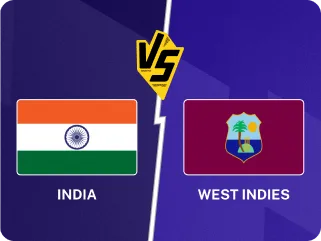
India beat England 1-0 in 2007 to end a 21-year wait for a Test series win in the nation.
Back home, not many gave India a chance when they toured England in the summer of 2007. England had, after all, not lost a home series since the 2001 Ashes.
Head coach Greg Chappell’s tumultuous stint had come to an end when he had resigned after India’s disastrous World Cup – their only group-stage exit since 1992 – earlier that year. India had been unable to find a full-time replacement since then. It had not been for lack of trying: the BCCI had reached out to Dav Whatmore, Graham Ford, John Emburey, but to no avail. In the end, they travelled to England without a coach, with Chandu Borde as manager.
Sachin Tendulkar was coming off an ordinary 2006 (267 runs at 24.20). Rahul Dravid’s incredible consistency in the first half of the decade had shown early signs of a decline. VVS Laxman had never really taken off in England. Sourav Ganguly was on a comeback trail. And India were using Dinesh Karthik as a Test opener. None of them made India’s only hundred in that series: neither did Karthik’s partner Wasim Jaffer or a young MS Dhoni.
What India did have, however, was three fast bowlers. After an impressive start, Zaheer Khan’s Test career seemed to be in the doldrums, but a Worcestershire stint in the previous summer had proven restorative.
Partnering Zaheer was RP Singh, yet another left-arm seamer. Both men were capable of swinging the ball both ways from both over and round the wicket. They had done that with the red Kookaburra earlier that year in Chattogram and Mirpur. Now, with the Dukes in England, they were as good as lethal.
This essentially forced the England batters to face eight different angles. “There had not really been anyone in international cricket who had swung the ball both ways from round the wicket since Wasim Akram,” noted the Wisden Almanack.
Then there was the mercurial Sreesanth, capable of breaking open games on his own. He had done that less than a year ago to bowl out South Africa for 84 in Johannesburg when India won a Test in the nation for the first time. And, of course, there was Anil Kumble.
England, on the other hand, were without all five bowlers who had famously helped regain the Ashes two years ago.
Narrow escape at Lord’s
England should have won the first Test match after Kevin Pietersen made an exceptional 134 after Zaheer had made him “rethink his game plan”. They were thwarted by slow over rates, Steve Bucknor, and rain. They “seemed happy to plod through their overs” even with rain forecasted.
Zaheer took 4-79 and RP 5-59 in the third innings, but chasing 380, India were 263-9 with more than a session left. Dhoni watched in horror from the other end as Monty Panesar hit Sreesanth in front of the stumps. But Bucknor, whose decisions in the Sydney Test would create an uproar in a few months’ time, ruled not out. Ten balls later the rain came for good.
Jellybeans at Trent Bridge
Trent Bridge was where the Indian turnaround had begun on their previous tour, in 2002. Rain delayed the start this time, and when play resumed, Dravid won the toss and Zaheer (4-59) bowled out England for 198.
Then India ground it out. After Jaffer and Karthik made fifties at the top, Dravid, Tendulkar, Ganguly, and Laxman curbed their strokes to give India the lead they needed. Tendulkar got a poor lbw on 91 – a rare misjudgement from Simon Taufel – but that was hardly the biggest controversy of the Indian innings.
As Zaheer walked out, at least one English fielder threw jellybeans on the pitch near him. It was a juvenile act at best. Zaheer brandished his bat – and had a verbal exchange with Pietersen. India stretched their lead to 283.
The early hostilities came from Sreesanth. He hurled a beamer at Pietersen. His shoulder brushed against Michael Vaughan’s. He overstepped off consecutive balls while attempting to bounce Paul Collingwood. And he coughed up fifty per cent of his match fee.
But it was Zaheer who produced the spell that swung – literally – the match India’s way. Having averted the innings defeat, England were four runs ahead when Zaheer bowled Vaughan and, with a peach, Ian Bell. RP knocked out Matt Prior’s middle stump before Zaheer had Collingwood caught behind. England, from 323-7, folded for 355. India won by seven wickets.
Twenty-one years later
The lead acquired, Dravid won the toss again and had little hesitation in batting first on a flat Oval pitch. The team sheets revealed that the two teams set a world record by using only 22 players between them over a three-match Test series (this is still the only instance of this).
Over the first two days, India completely batted England out of the match by amassing 664. There were eight stands of at least fifty – two clear of the existing world record. All 11 Indian players reached double figures. Eight of them got to 35. Six went past fifty, and that included Karthik’s 91 and Dhoni’s 92.
But the box-office moment was the shot that got Kumble to his maiden Test hundred. It was hardly out of the MCC manual: he stepped out, lost his balance, and somehow inside-edged through Prior’s legs. But everyone in the dressing-room cheered for one of the most popular cricketers.
Despite the 319-run lead, Dravid did not enforce the follow-on. Perhaps he did not want to stretch Zaheer, who was not at 100 per cent fitness. Perhaps it was the flat surface. Instead, after India became 11-3, Dravid stonewalled for a 96-ball 12 – unattractive to the core, but it sealed the series. By the time he declared, England were out of it.
It was not attractive cricket, but Dravid had ensured that India won a Test series in England after 21 years to lift the inaugural edition of the (now-defunct) Pataudi Trophy.
The legacy
Dravid had led India to their first ever Test win in Pakistan, but is usually remembered for declaring with Tendulkar on 194.
He led India to their first Test win in South Africa, but India lost the series.
He was the first Asian captain in 35 years to win a series in the West Indies – in Brian Lara’s presence and Tendulkar’s absence – but his foray in the islands is largely associated with the disastrous World Cup.
Much of Dravid’s eventful tenure was dominated by news around the tussle between Ganguly and Chappell.
Now, in his last tour at the helm, Dravid the captain’s CV had a defining entry.








